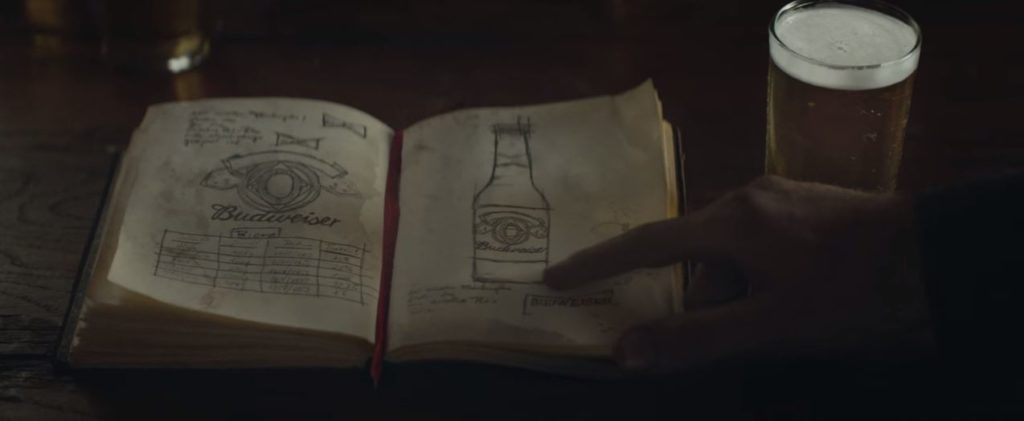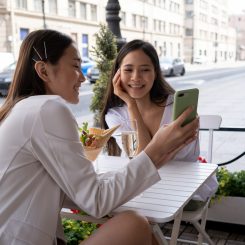One thing is for sure: There’s very little gray area when it comes to social marketing. In almost every case, it’s either brilliant or it’s terrible. For the brands that “get it”, social is a veritable gold mine.
The best social marketing strikes a balance among five goals:
- Raising brand awareness
- Building loyalty and advocacy
- Driving sales
- Increasing site traffic
- Soliciting feedback
With $33 billion in ad revenue on the line, it’s clear that social marketing is more than just a buzzword and lip service. Companies are taking it seriously, and their customers are too.
In this article, we’ll highlight 31 of the best campaigns and methods, giving you some insight into what works and why.
1. Wendy’s Weaponizes the Clapback
There’s brand voice, and then there’s Wendy’s. The company has taken to witty sparring matches on Twitter, and the risk is paying off. Wendy’s has won accolades from customers and media alike for removing the filter that we normally see.
When a brand decides to stop talking like a brand, there’s a fine line to be walked between “genuine” and “trying too hard”. Wendy’s has managed to toe it perfectly. A quick Google search will show you thousands of articles written about the company, and it just reported its 17th straight sales increase.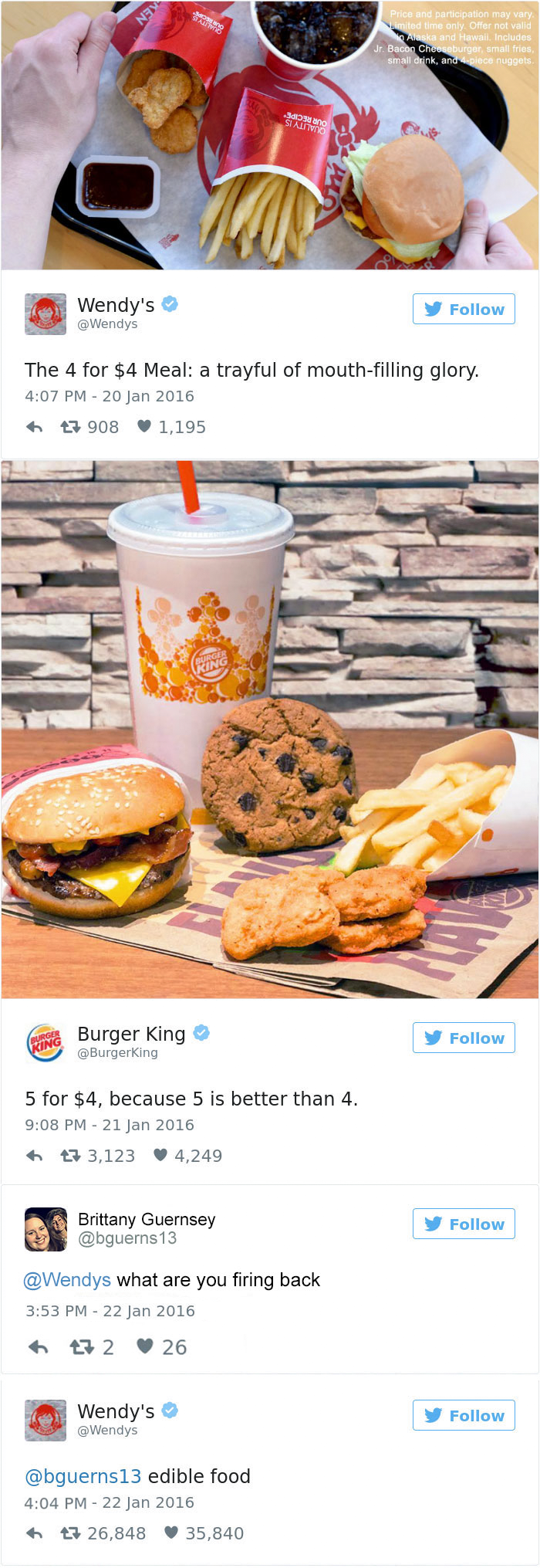
2. Nat Geo Taps Facebook for Photos
My Nat Geo Cover Shot was a Facebook-powered contest, used to promote the CoverShot television program. It tapped the network of over 10 million people who had Liked the National Geographic page, allowing them to create their own cover via photos uploaded through the app.
National Geographic connected with their audience by understanding the powerful link between photography buffs and nature. The contest allowed users to share their created covers, and in doing so, it entered them into a contest to have their photo featured in the magazine as well as an expenses-paid vacation.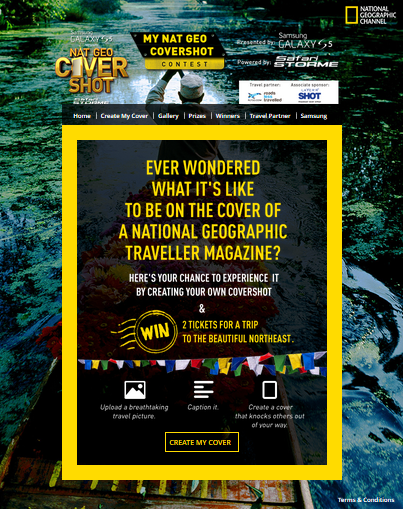
3. Oreo Dunks in the Dark
Some of the best marketing moments are created by allowing a team to have autonomy. Oreo found that success in 2013 by taking instant advantage of an awkward power failure during the Super Bowl. The company’s spur of the moment, genius ad was retweeted more than 10,000 times in a single hour, and still gets engagement today.
More brands are finding the second screen to be a welcoming home, but unfortunately that also means that we see a lot of imitators trying to make lightning strike twice. The true spontaneity of Oreo’s tweet was the magic that made it a success.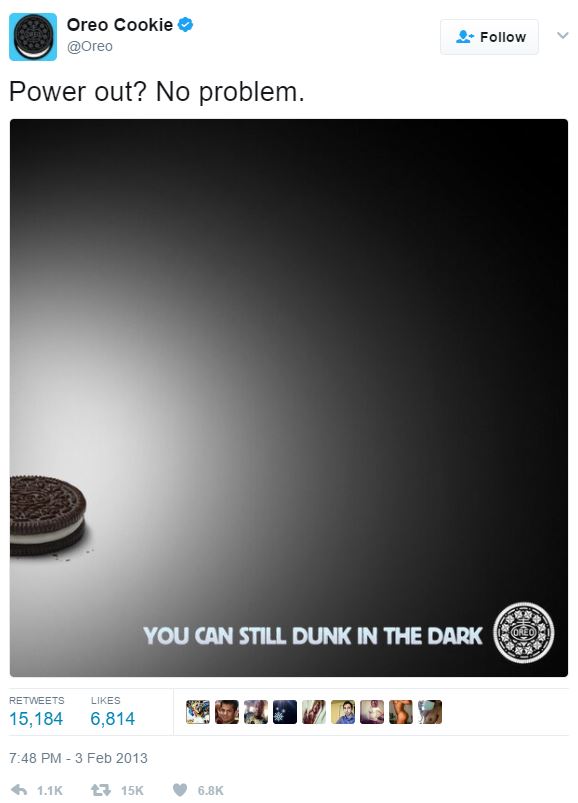
4. The ALS Association Gets Hot in the Cold
Remember a couple of years ago when your friends were pouring buckets of ice-cold water over their heads? The ALS Ice Bucket Challenge struck a chord that led to viral success, and over $115 million donated to finding a cure for Lou Gehrig’s disease.
This was a prime example of using social marketing for brand awareness. The ALS Association has long felt the challenge of being relatively unknown. But when everyone’s Facebook, Twitter and Instagram feeds are filled with videos, it’s hard to stay in the dark.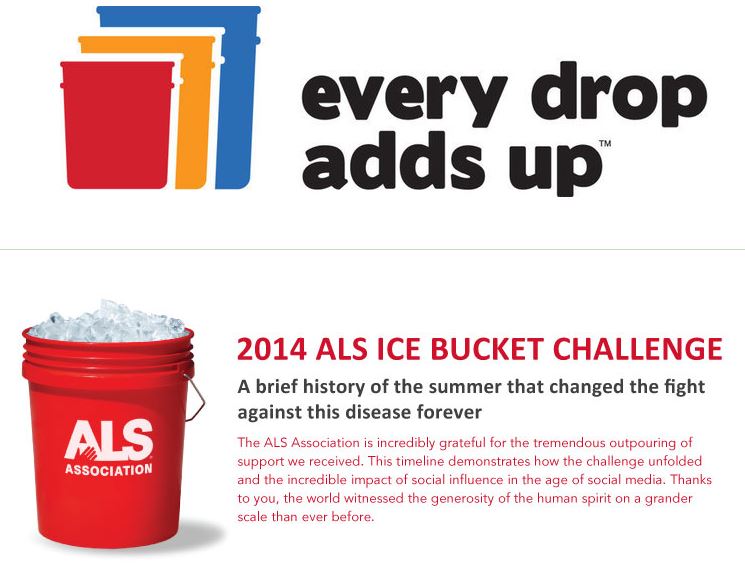
5. The White House Has You Covered
President Barack Obama entered the White House with a promise to make healthcare more affordable for all Americans. The Healthcare.gov website launch was marred by downtime, and the ACA itself had enough opponents that any campaign surrounding it was risky. So by asking people to share their story with the #GetCovered hashtag, the White House was facing its own giants.
While the results of the Affordable Care Act can be argued to some degree, the success of the #GetCovered campaign cannot. With over 20 million more insured people to date, and a social campaign that told their stories, #GetCovered was a shot across the bow to would-be detractors.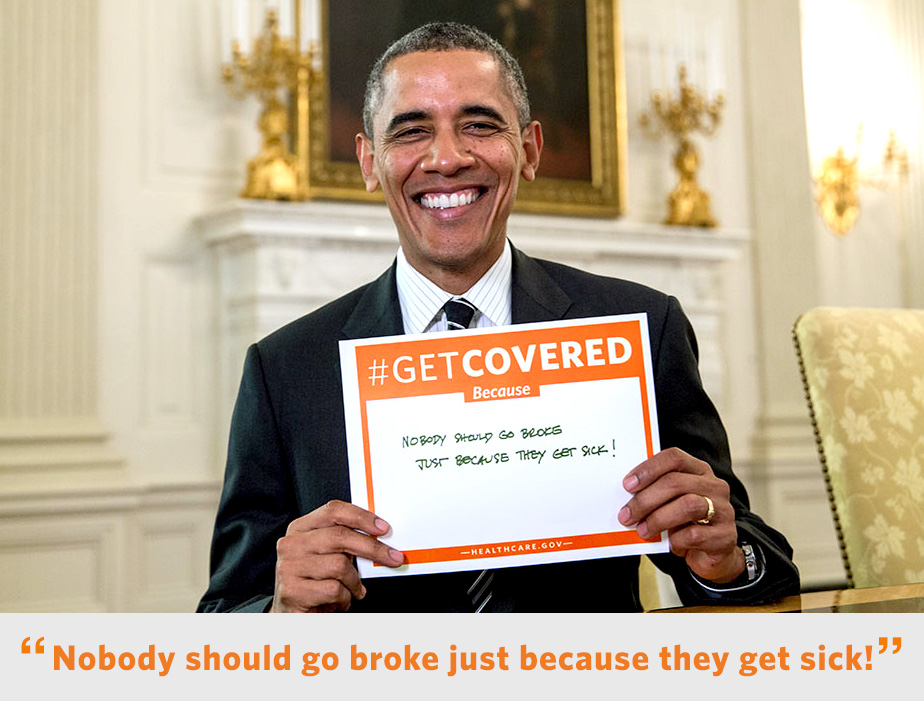
6. But First, Let NASA Take a Selfie
NASA is a bit of a darling in the social media world. Between its NASA Socials program and the agency’s willingness to engage across different platforms, it has found advocacy far outside of the United States.
For Earth Day 2014, NASA took an interesting approach and capitalized on an existing base of proactive users. NASA asked people to send photos of themselves from around the world. The agency then took the photos, melded them all into a gigapixel photo collage, and created an astounding map of the earth.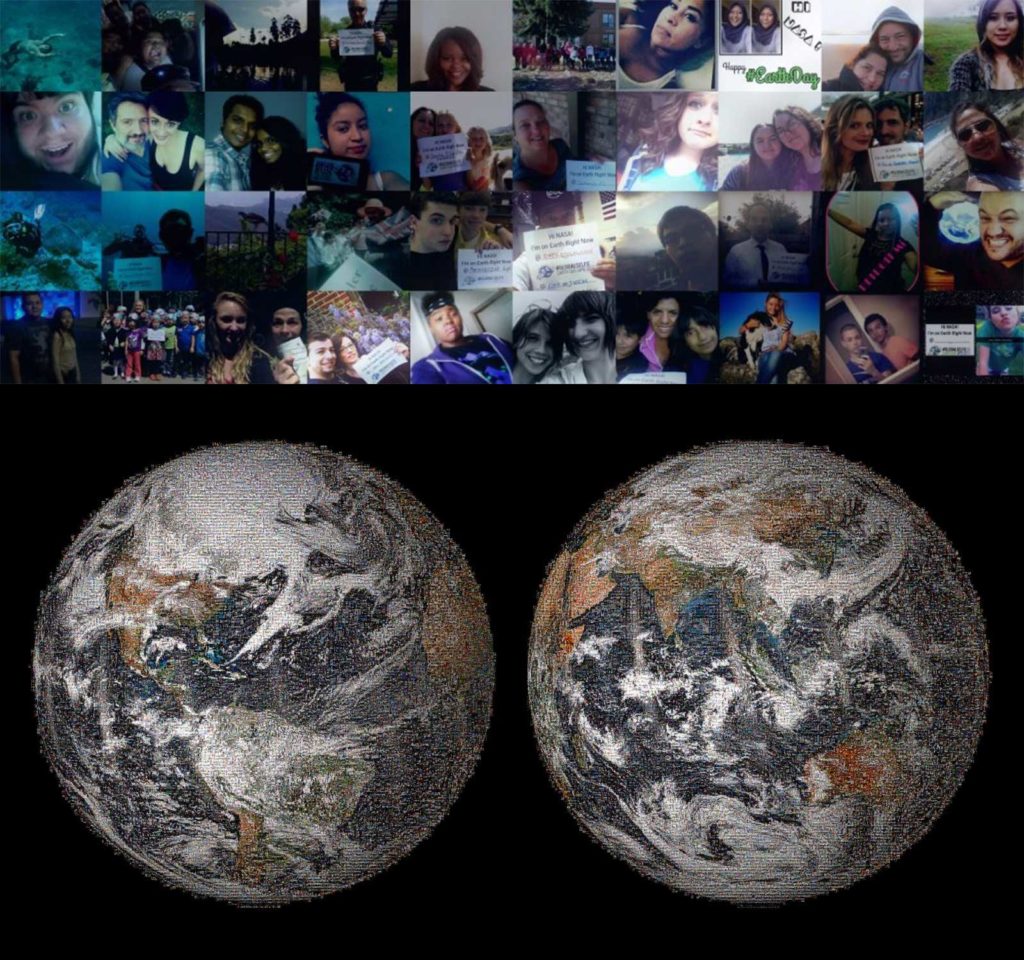
7. Fandango Masters UGC
Fandango strikes a fun balance with its Facebook-based caption contests. The company posts a photo or frame from a current movie, and asks fans to caption it. The chosen winner gets a pair of tickets to see the movie of their choice.
The magic here is in how much engagement Fandango sees for a prize that costs them next to nothing. (We all know that the snacks and drinks are the money makers anyway!) The company knows that, for their fans, the prize is less about the tickets and more about the dopamine hit that they’ll get from seeing Likes pile up on their suggestions.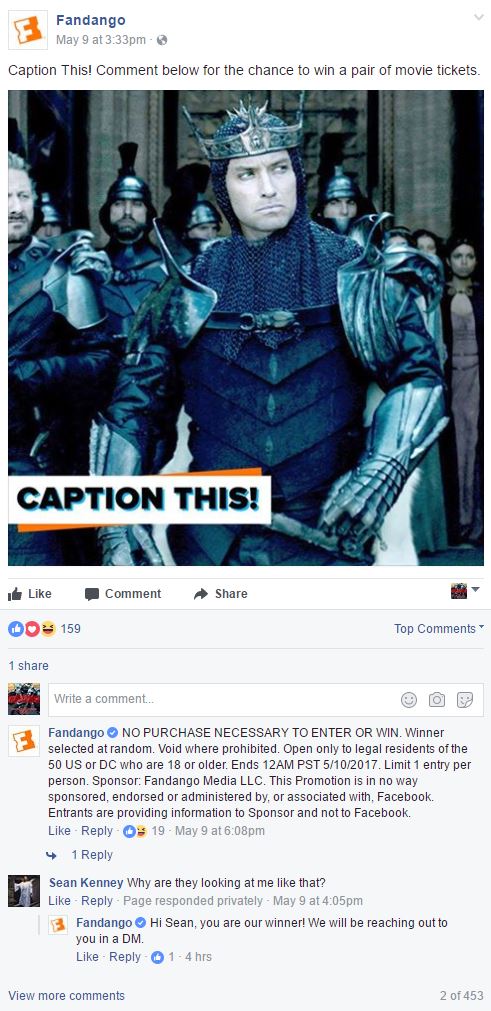
8. The Legend of Harley-Davidson
Harley-Davidson may still be the leading motorcycle seller in the United States, but even as worldwide demand continues to rise, the lumbering giant is seeing sales fall. A big part of this is due to Harley’s aging customer base. The company knows that it has to make a big push into messaging that resonates with younger buyers.
The moto maker brought out the Live Your Legend campaign in early 2016, and has found some pretty great success. It currently has over 81,000 posts across Instagram, and over 100,000 more on Facebook. When you’re trying to raise the awareness of your brand to a younger market, there’s hardly anywhere better.
9. Walt Disney Shares Ears, and Dollars
Walt Disney’s liberal use of social has led to some amazing campaigns over the years. One of its most recent is also one of its most successful. The #ShareYourEars campaign encouraged Disney fans to share their photos with the hashtag. For each photo shared, Disney would donate $5 to the Make A Wish Foundation, up to $1,000,000.
Disney followed an old rule of interaction – don’t make the user change their behavior. Park visitors are prone to sharing their selfies anyway, so the “feel good” benefit of adding a hashtag was an easy transition. The campaign surpassed even Disney’s expectations, eventually garnering over 200,000 shares, which Disney echoed by upping its donation to $2 million.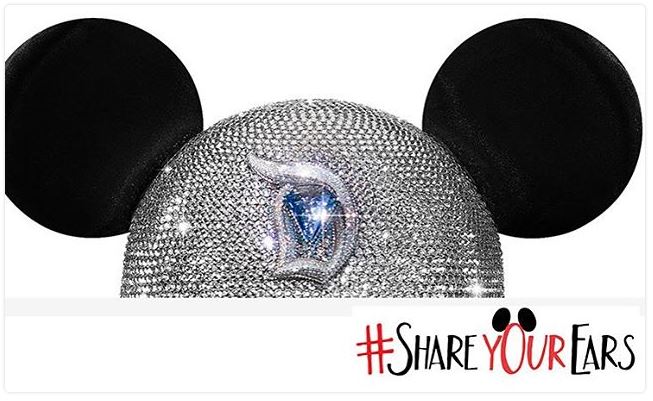
10. WestJet Makes 12,000 Dreams Come True
How do you own national media for an entire day, while involving every single person in your organization? If you’re WestJet, you perform 12,000 small “miracles” in 24 hours. From a hot meal for a homeless person to sending a veteran and his family to Hawaii, the company found ways to interact on a personal level with people from around the world.
WestJet pulls on heart strings through the video, and relied on the collective desire to do good through the holidays. We could say so much more, but this 4-minute video is a better use of your time.
https://www.youtube.com/watch?v=ME9PmSZedB4
11. Heineken Brings Worlds Together
In a timely move after a Pepsi ad flopped, Heineken found a way to raise conversation around its brand by showing that we aren’t so different after all. The video, and its associated #OpenYourWorld hashtag, has garnered nearly 12 million views in its first three weeks, and rave reviews from the media and customers alike.
The video’s success can be attributed to having the courage to face tough scenarios. It focuses on hotbutton topics in today’s climate, then shows how people of vastly different opinions can still work together. The placement of “having a discussion over a Heineken” only appears at the end of the video.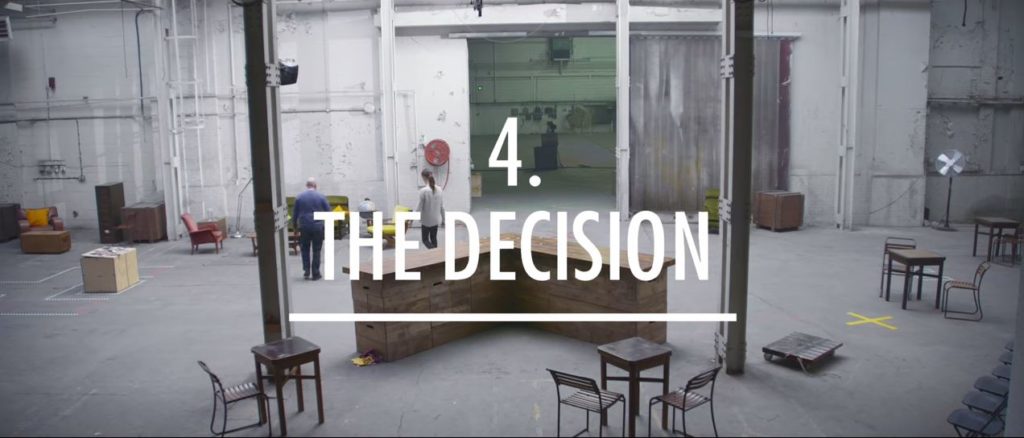
12. BuzzFeed Makes Tasty Videos
Tasty, a food-focused section of the BuzzFeed domain, follows the methodology that the brand uses elsewhere. List posts, tips, and reaction videos are the standard, but it’s the 1-minute recipes that are the star of the show. These videos garner tens of millions of views across the site, Facebook and Instagram, helping to raise awareness for the BuzzFeed brand of content.
The key to Tasty’s success is in having quick, bite-size content that is also topical. You’ll see recipes for Super Bowl parties, Mother’s Day, Christmas parties, and all points in between.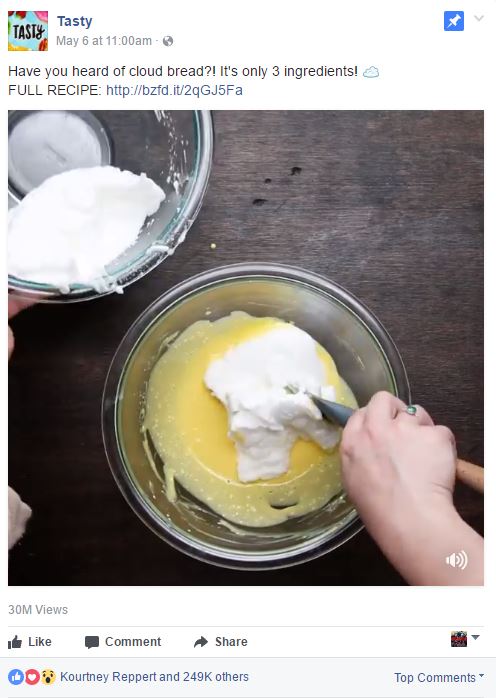
13. Dove Finds Beauty in Everyone
It’s been over 17 years since the genesis of this campaign, but its longevity is a testament to how well it resonates with Dove’s audience. The personal care brand has done “behind the scenes” videos showing what goes into a billboard, they’ve made people cry tears of joy by having others describe them, and they’ve struck a chord that has turned buyers into brand advocates.
Though there have been some missteps along the way, the Real Beauty campaign shows no signs of slowing. The magic to this campaign comes from finding a message that resonates. In the case of its first ad, it showed the transformation of a “normal” person into a billboard supermodel, and what it takes to get there.
14. Have a Coke and a Smile
If you’re trying to make a personal connection, using someone’s name is a quick way to do it. In the case of Coca-Cola, the brand gave up valuable space on its label, encouraging buyers to “Share a Coke with _____”. This led to a buying spree and the infamous Coke logo being posted by users who found their names, or amusing combinations of other ones.
When a customer is buying your product, then sharing their purchase to everyone they know, that’s the stuff of marketing dreams.
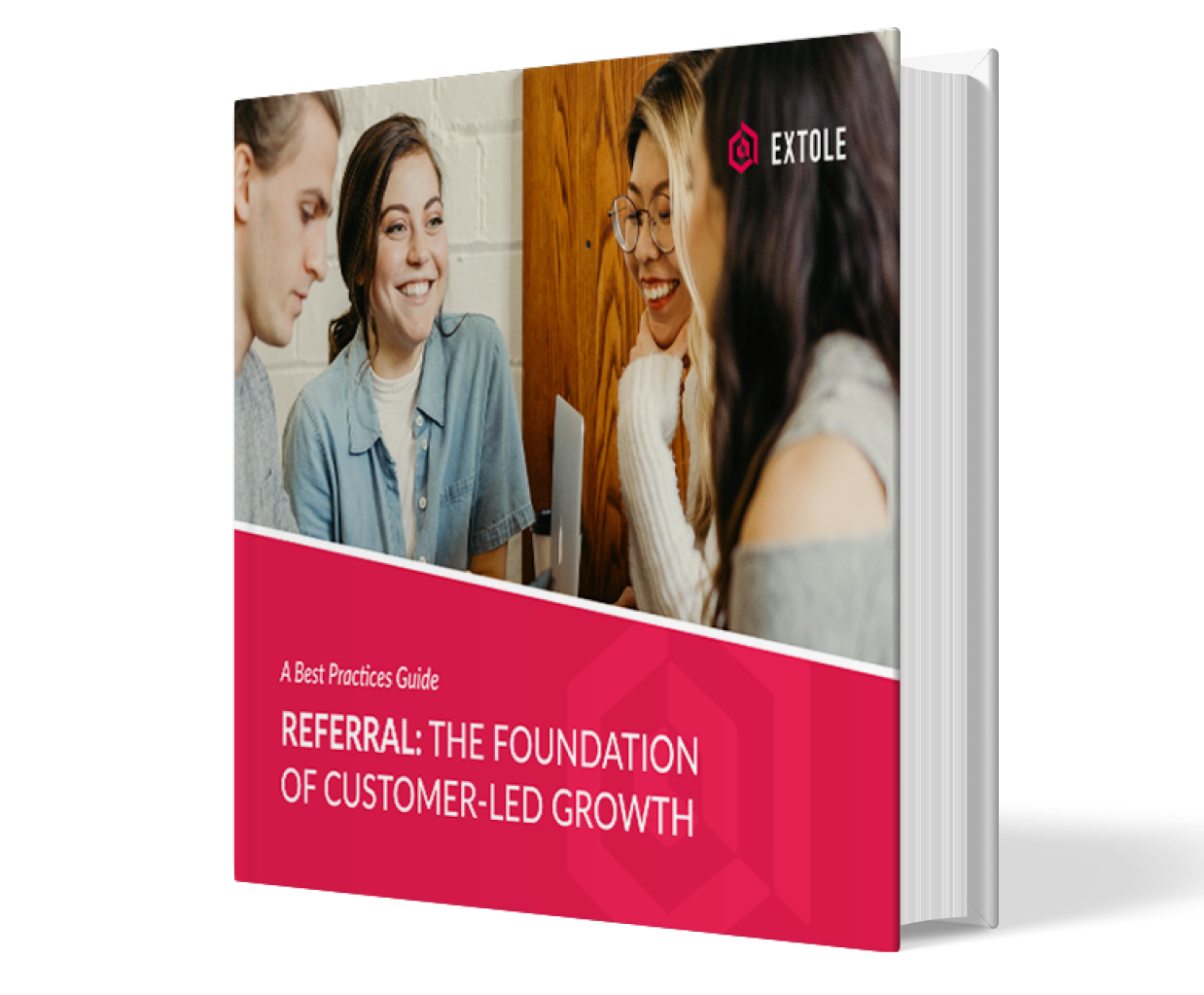
Referral Marketing – The Best Practices You Need to Know
Written by veteran referral marketers, this guide will help you optimize your referral marketing program and supercharge growth.
Get the Guide15. Lowe’s Fixes in a Flash
With every new platform, the challenge is how best to use it. Vine’s six-second limit on video forced users and brands alike to think differently about their approach. Home improvement warehouse Lowe’s took things a step further by creating an entire series, called “Fix in Six”, based on the six-second Vine platform.
The videos shared a variety of tips, from removing scratches in wood floors to chalk-painting a cutting board to give a kitchen staple a new lease on life. The campaign was a hit because it spoke directly to Vine’s users. Everyone’s in a race to see who can be the most creative in six seconds, this time it just happened to be a brand.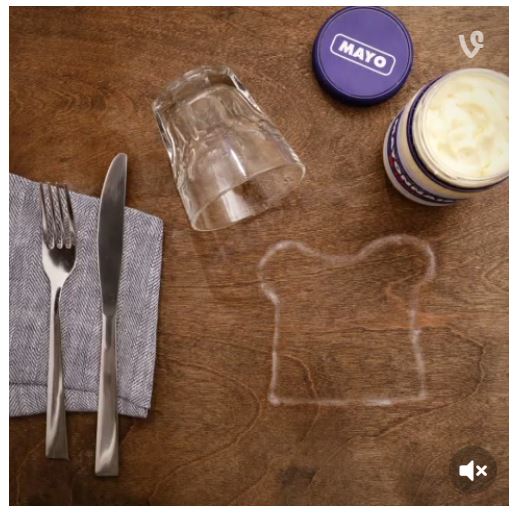
16. Warby Parker Brings it Home
Hipster-friendly eyeglasses from Warby Parker were a quick story of success on their own, but the company’s home try-on program really helped it reach the next level. Customers go to the Warby Parker site, pick out frames that they think they’ll like. The frames are then packed into a box and sent to the customer so that they can try before they buy.
Warby needed to get the word out about its brand, and the home try-on program let them step directly into the homes of their customers. The #WarbyHomeTryOn hashtag ran rampant on Twitter and Instagram, with prospective buyers showing off their frames and soliciting feedback from their friends. Customers get social validation, and Warby gets free advertising.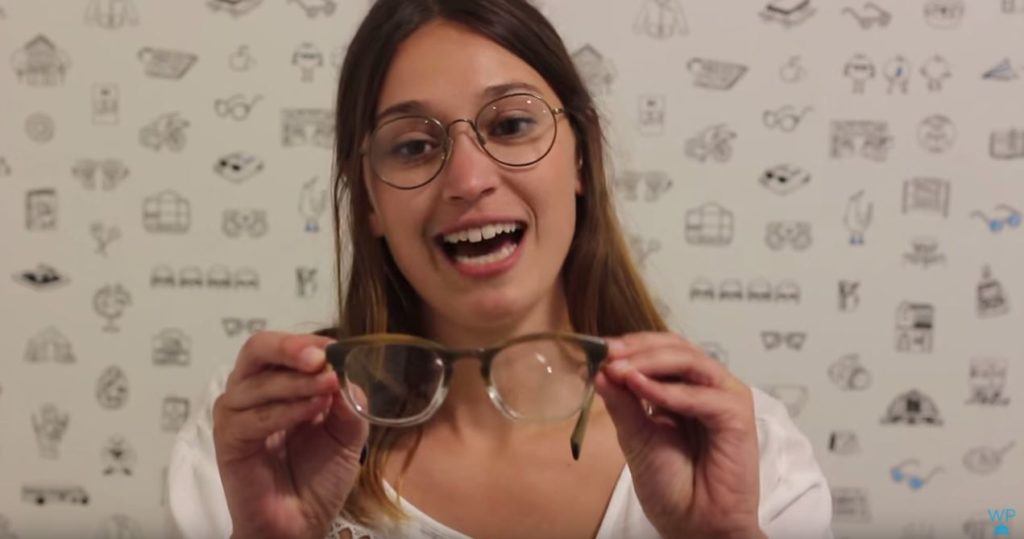
17. Lay’s Recruits Flavor Savers
If you’ve seen Lay’s flavors like Southern Biscuits & Gravy or New York Reuben then you’ve already seen the end result of this annual “Do Us a Flavor” campaign from Frito-Lay. The snack food brand holds an online contest, allowing people to submit their flavor ideas. The winner takes home a cool million bucks, and the notoriety of having their idea moved into production.
It’s an annual exercise in brand awareness, and the notorious Internet trolling has become almost as much of a contest as the contest itself. Entries like “Buttered Alligator” or “Existential Crisis” gather a chuckle while being shared online, with the Lay’s branding right above the ill-fated flavor idea.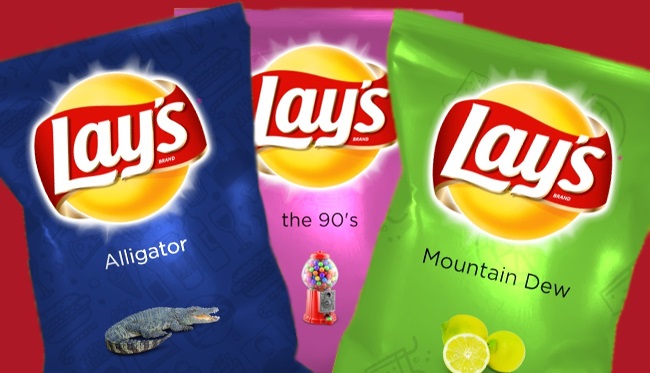
18. Old Spice, New Tricks
Old Spice needed to spice up an old brand. A series of quirky videos with Isaiah Mustafa started things in the right direction. But having him record video replies to Twitter inquiries, Yahoo Answers questions, and…just about anything else earned them a place in the social marketing hall of fame.
The crew spent the better part of a day quickly recording and uploading video replies with funny quips thrown in. Better yet, they didn’t keep their focus on celebrities, but also took the time to reply to “regular people” as well.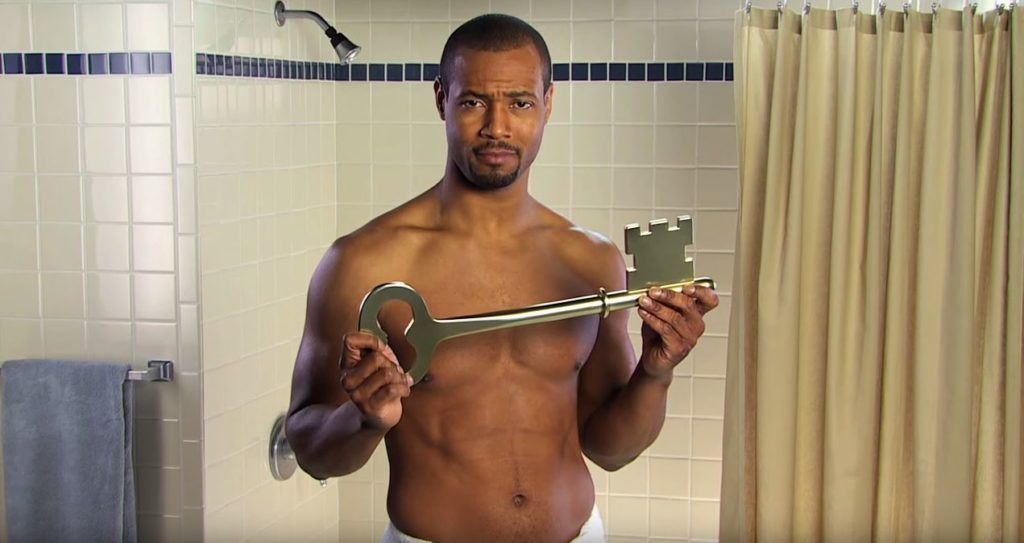
19. Arby’s Plays With Its Food
Sometimes a brand’s entire presence on a platform is a campaign unto itself. Arby’s on Twitter fits this bill perfectly. The restaurant mixes pop culture references with creative food art to create a product that is more than the sum of its parts.
The goal here is just to get people talking about Arby’s, and it’s working. Every couple of days the restaurant puts out a new piece, which instantly gets retweeted, shared, and replied to en masse.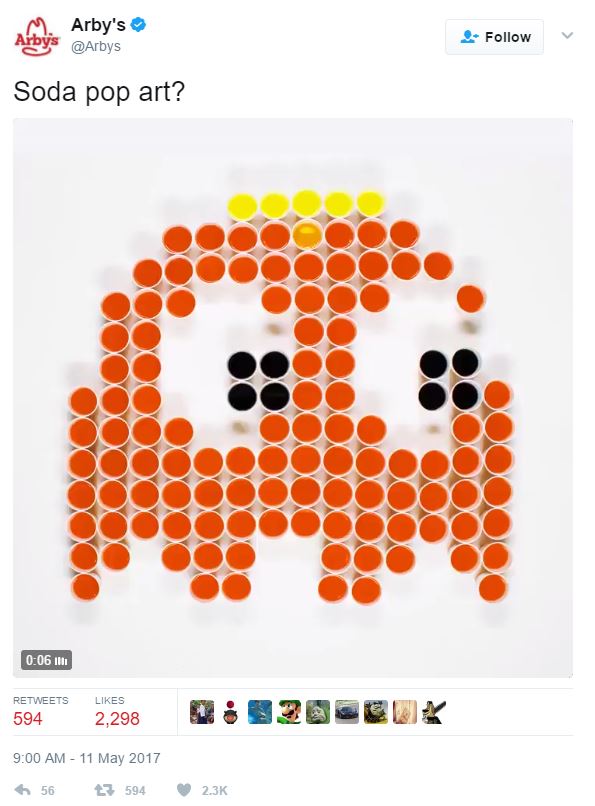
20. Kraft Gets Crafty
One of the secrets to a good campaign is good timing. In honor of Mother’s Day 2017, Kraft removed its filter for a hilarious video that shows a mom just trying to do her best. Published early in May, the video is rocketing its way to nearly 3 million views before the holiday arrives.
What’s especially notable about the campaign is Kraft’s choice to “see itself real” at the end of the video. Companies can fall into a trap of not seeing themselves the way that their customers do. The self-deprecating jab at the end of the video lets customers know that Kraft understands why people buy it, and it’s worth 2 minutes of your time.
https://www.youtube.com/watch?v=jV-opIMAtD4
21. Denny’s Gets Human
Late-night stalwart Denny’s is another example of using Twitter as a campaign. Except it’s not a campaign at all. It’s more like Denny’s handed the login information to a random (but admittedly funny) person and let them go nuts. There’s only occasional capitalization, the tweets are meme-heavy, and one-liners are the forte.
The beauty of this type of language is that it resonates with the rest of us because it is the rest of us. Whoever is running the Denny’s Twitter account has forsaken every golden rule and replaced them with another one: Talk like a human. By having a “real” voice, Denny’s finds its content getting widely shared, and its name into the timelines of people who might otherwise never see it.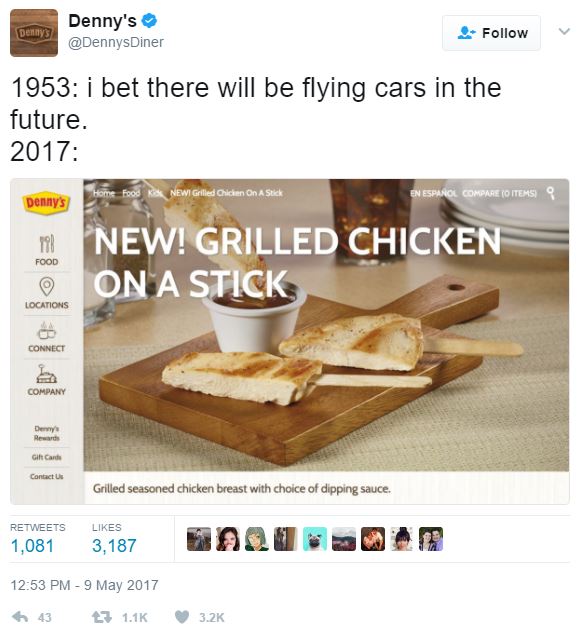
22. Always Hits Like a Girl
It’s interesting when we see brands take a stand. In the case of Always, that means taking ownership of “like a girl” and turning it into something positive. The original ad, which aired in 2014, raised some eyebrows…and 63 million views. A pared-down, 60-second version came back in 2016 during the testosterone-fueled Super Bowl.
Within minutes, the #LikeAGirl hashtag was trending on Twitter, with stories of strength from women around the world. The campaign was timely, topical, and capitalized on user-generated content to help spread its message.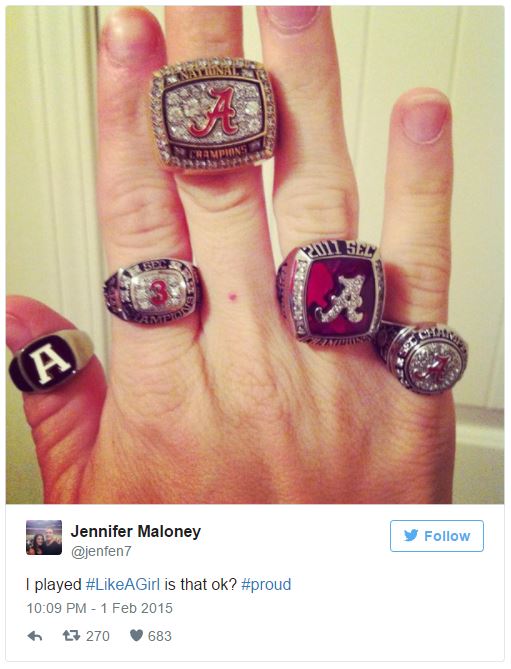
23. Newcastle Splits the Check
With an average ad cost of $4.5 million, Super Bowl airtime is far out of reach for most brands. Newcastle has long been unrepentant about its quirky sense of humor – one of their neon bar signs literally says that it will look great in a basement some day – so it relied on just that to get itself Super Bowl attention.
The beer brand put out the call for other brands who wanted to chip in for a Super Bowl ad. They had over 400 brands respond, and pared down the list to 37 who would actually make it into the commercial. By refusing to take itself seriously, the hectic, 60-second spot gathered lots of attention and some awards along the way.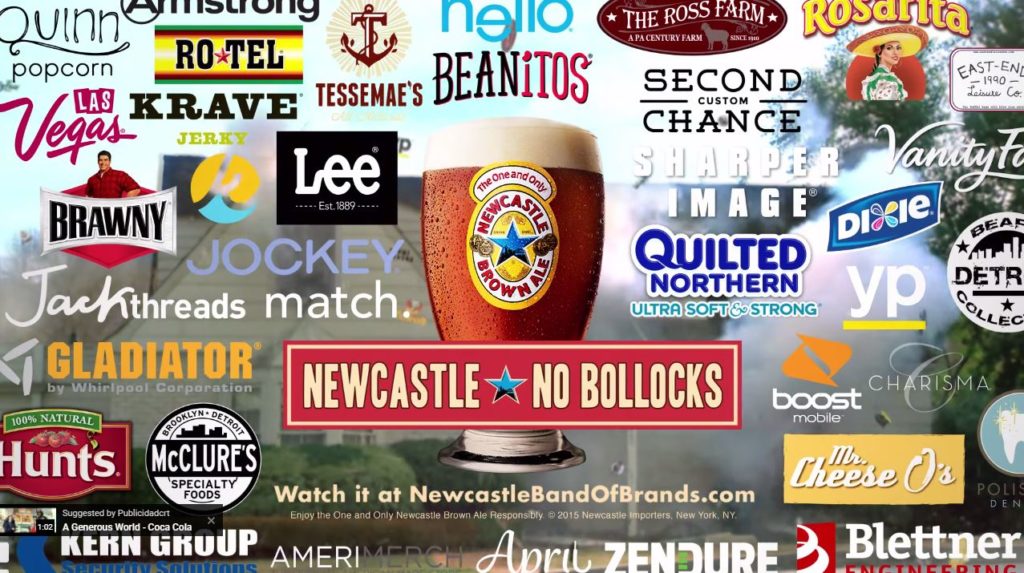
24. Tom Buys Some Shoes
TOMS has always been a brand of a different sort. The company started its mission to improve lives by giving a pair of shoes to someone in need every time a customer bought a pair. This spawned the #WithoutShoes campaign, where customers and brand advocates around the world joined TOMS to give back to those in need with a one-day flood across social media.
As the years have passed, TOMS has expanded its efforts to providing clean water, vision screenings, safe birth, and bullying prevention. The #WithoutShoes campaign has expanded as well, encouraging followers to pick a color and a cause each year in May. It works for 3 reasons: low barrier to entry, a feeling of doing good, and being part of a community.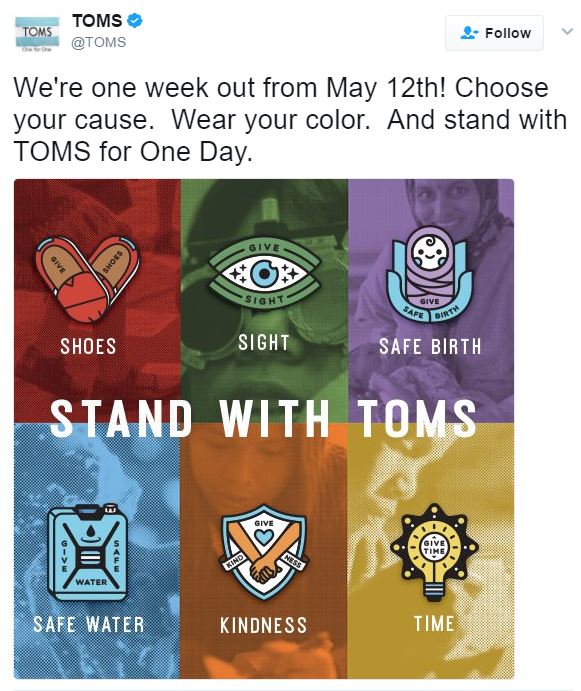
25. WWF Hugs Its Mother
Ten years ago, the World Wildlife Federation joined up with a Sydney-based advertising agency to produce Earth Hour. It is a symbolic gesture, where everyone around the world turns off non-essential lights for one hour in a show of solidarity for commitment to the planet.
As one of the longest, constantly-running social marketing campaigns, Earth Hour has been wildly effective in raising the awareness for the WWF. Cause-related campaigns create a perfect opportunity to help while showing others how you’re making an impact.
26. Nike Makes it Count
To market the launch of its FuelBand fitness tracker, Nike tapped filmmaker Casey Neistat. He had only one piece of direction: Create a movie centered around the idea of “make it count.” Neistat took the budget, grabbed a friend, and brought his signature style to a video documenting his trip around the world in 10 days.
Nike found success by letting go and seeing how other people would interpret their message. Neistat’s stunning visuals and “just do it” mentality were a perfect combination for the campaign.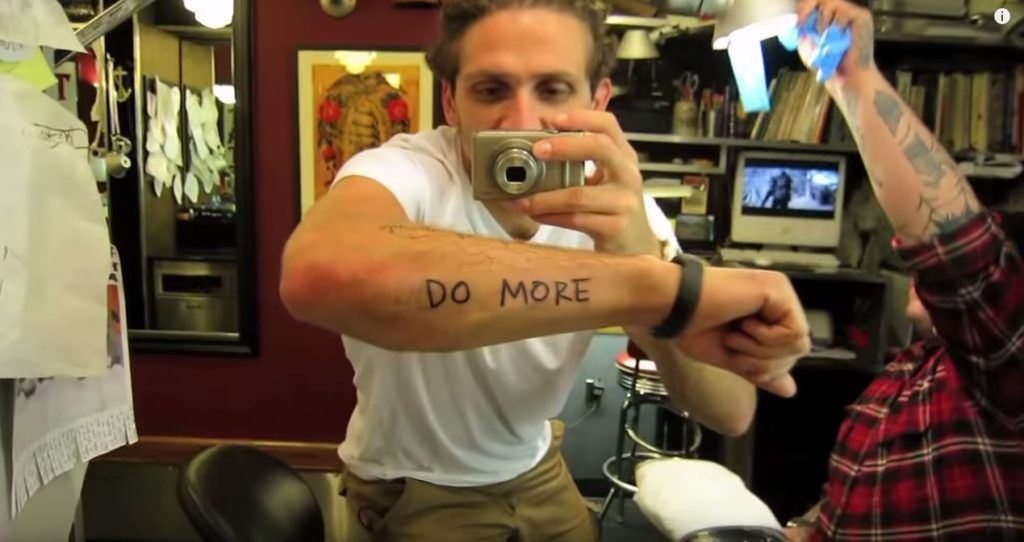
27. L’Oréal Paris Speaks Volumes
We’ve seen a number of campaigns that are aimed at sparking social awareness, and the #WorthSaying effort from L’Oréal Paris still manages to stand out among the crowd. The campaign ran in conjunction with the Golden Globe Awards, where actresses are typically asked more about their clothing than any other subject.
The empowerment behind the message worked, sparking a trending topic on Twitter that aligned L’Oréal Paris with like-minded consumers. Celebrity spokespersons may have started the conversation, but the messaging resonated with a much wider audience who soon joined in to tell their own stories.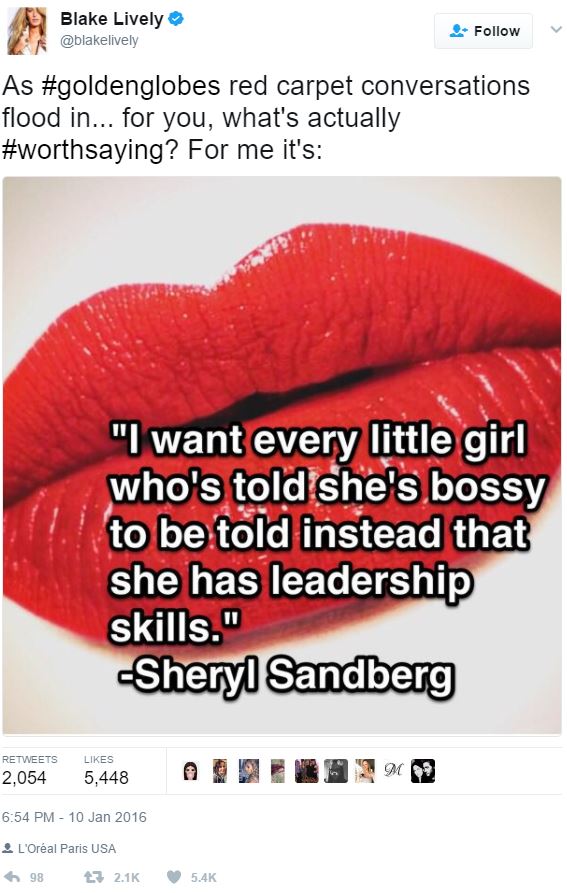
28. Balvenie Explores Parts Unknown
There is a certain brilliance to what Balvenie is doing to (not) advertise its scotch whiskey. The company tapped celebrity chef and Parts Unknown host Anthony Bourdain to create a YouTube series focused on the lost arts of bespoke craftsmanship. Raw Craft has visited guitar makers, cobblers, and even a printing press to show how the ages-old traditions are still alive.
The narrative ties in perfectly with Balvenie’s product, but the whiskey only makes a brief appearance in any video. It’s almost always tucked away neatly, or being poured into a glass that will be shared over a meal. The videos are engaging, short enough to enjoy on a work break, and never make the viewer feel like they’re being sold to. Brilliant.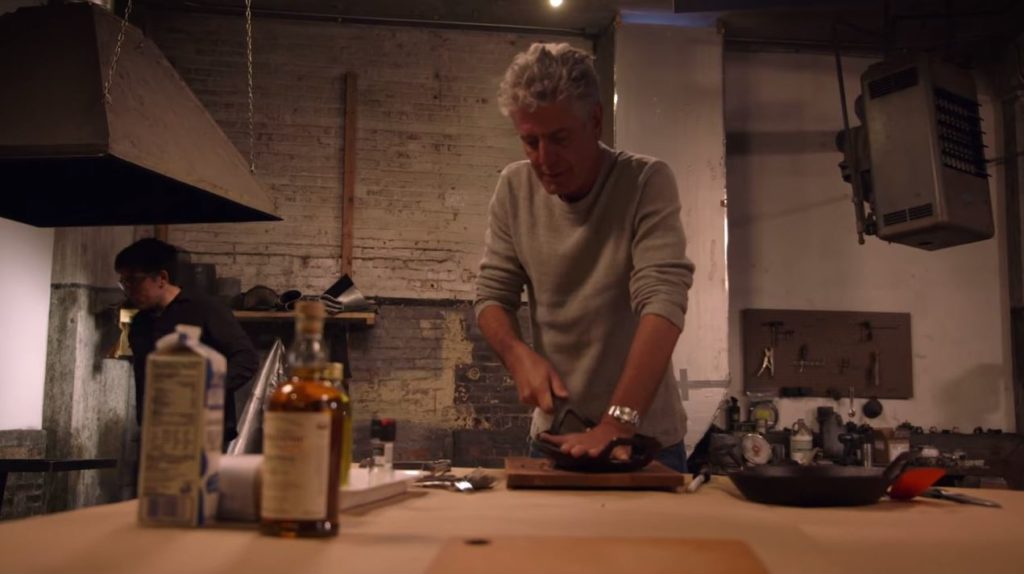
29. Worldwide Breast Cancer Makes Lemonade
Talking about medical conditions is never easy. Getting people to talk about them is even harder. The foundation of Worldwide Breast Cancer hopes to lighten the mood a bit with the #KnowYourLemons campaign.
The tongue-in-cheek approach to a sensitive subject is a great method for raising awareness. WBC is plastering the hashtag and messaging across social networks, and is already gathering quite the discussion. Organic coverage from The BBC, Mashable, Glamour, and others certainly hasn’t hurt their chances of success.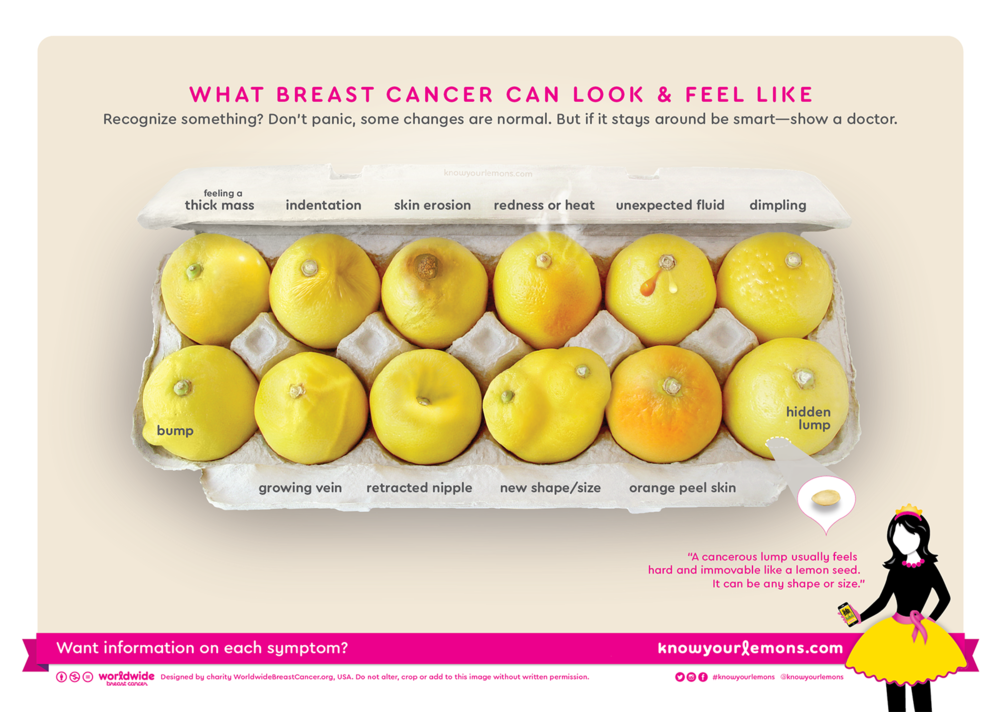
30. REI Gets Forceful
Following in the wake of the Women’s March on Washington, REI is focusing on women’s empowerment for 2017. The #ForceOfNature campaign celebrates women by telling their stories, designing more female-inspired outdoor gear, and holding 1,000 classes across the United States where women can learn together.
The company’s blog holds the majority of the content, and REI has spared no expense to make it great. Latching on to a sensitive topic is not always advisable. But if you’re going to do it, follow REI’s lead and make your efforts authentic.
31. Budweiser Relives History
2017 has been a tough year in some regards. Discussions around immigration and what it means to be an American have gotten far more than heated on a number of occasions. But Budweiser wasn’t afraid to take a stand with its ad during the 2017 Super Bowl.
Featuring the story of a young immigrant coming to America to find his dream, Budweiser had to know that it was stepping into hotly-debated territory. At 28 million views and counting, they obviously did something very right.